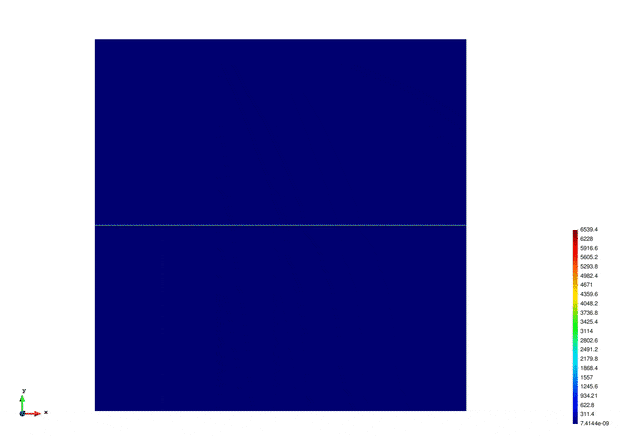Examples
All benchmarks, examples and applications cases to be run by Kratos. Note that unit tests are in Kratos repository and NOT here
Kelvin–Helmholtz instability - Example for usage of Periodic Boundary conditions
Author: Aditya Ghantasala
Kratos version: Current Head
Source files: Kelvin–Helmholtz instability
Problem definition
To demonstrate the usage of periodic boundary conditions. The problem is a well known and documented natural phenomenon of Kelvin–Helmholtz instability. More information on the phenomenon can be found in this Wikipedia page
The problem setup consists of a unit square with two different velocities on the top and bottom halfs. This is illustrated in the Figure 1. The upper half (in Brown color) has a velocity in positive X direction with a magnitude of 3. The lower half (in Green color) has a velocity in negative X direction with a magnitude of 3.

Fluid with two different speeds[1]
The below figure shows different boundary condition applied on the unit square domain from Figure 1. The Left and Right edges (in Orange and Blue respectively) are choosen as periodic boundaries. A slip boundary condition is applied on Top and Bottom boundaries (in Pink and Green respecitively).

Visualization of Boundary conditions [2]
Results
A simulation is performed with the above boundary conditions. The contours of Voriticity magnitude of the fluid are animated in the below figure.

Vorticity Magnitude[3]
The result of expected mixing of two fluids as in the Wikipedia page can be observed above.